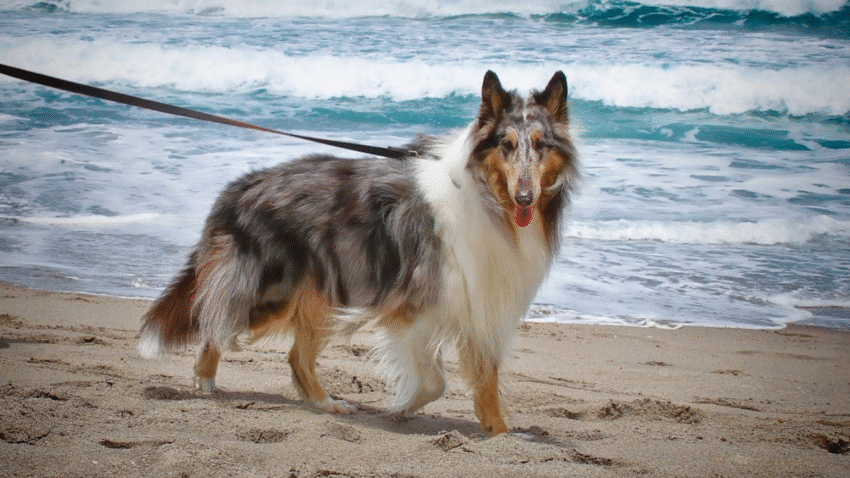Introduction
Bringing home a rescue dog is one of the most rewarding experiences you can have—but it can also come with challenges. Many rescue dogs suffer from anxiety due to trauma, neglect, or inconsistent environments in their past. The good news is that, with patience and the right approach, you can help your new companion feel safe, secure, and confident. In this guide, you’ll learn how to reduce anxiety in rescue dogs using calm routines, trust-building techniques, and positive reinforcement.
Why Anxiety Is Common in Rescue Dogs
Rescue dogs often come from difficult backgrounds that affect their mental and emotional health. Anxiety in dogs can stem from:
- Abandonment or neglect
- Abuse or harsh training
- Lack of socialization
- Sudden changes in environment
- Time in shelters or foster homes
Signs of anxiety may include trembling, hiding, pacing, barking, destruction, or avoidance of people or other animals. Understanding the root of their fear is the first step toward helping them heal.
Step-by-Step Guide to Reducing Anxiety
1. Create a Calm, Safe Environment
Start by making your home feel secure and welcoming.
- Set up a quiet space with a comfortable bed, toys, and water.
- Use calm colors, soft lighting, and minimal noise in this area.
- Limit access to the whole house until your dog feels more confident.
Avoid overwhelming them with too many new people, pets, or sounds at once.
2. Establish a Consistent Routine
Dogs thrive on structure. A predictable schedule helps anxious dogs feel in control.
- Feed, walk, and let them out at the same times each day.
- Keep interactions low-key and consistent during the first few weeks.
- Gradually add new activities like car rides, walks, or guests only after your dog settles.
Routine reduces uncertainty, which lowers stress.
3. Build Trust Through Positive Reinforcement
Anxious dogs need time to learn that humans can be kind and predictable.
- Use soft voices, slow movements, and gentle eye contact.
- Reward calm behavior with treats, praise, or affection.
- Let your dog come to you—never force petting or cuddling.
Each positive interaction builds confidence and trust in their new environment.
4. Use Safe Spaces and Crate Training (If Comfortable)
A crate, when introduced positively, can be a safe retreat for many dogs.
- Leave the door open and add blankets, toys, and treats inside.
- Never use the crate as punishment.
- If your dog doesn’t like crates, consider using a quiet corner with a bed or covered crate-style den.
Safe spaces give anxious dogs control and comfort.
5. Provide Mental Enrichment
Boredom can worsen anxiety. Mental stimulation helps redirect nervous energy.
- Offer puzzle toys, lick mats, or treat-dispensing toys.
- Practice basic commands like “sit,” “stay,” and “touch” using gentle training.
- Use sniffing games like hiding treats around the room or in a snuffle mat.
Even 5–10 minutes a day can help reduce stress and improve focus.
6. Use Calming Tools and Products
There are several safe tools that can support your dog during the adjustment phase.
- Calming chews or natural supplements (ask your vet for recommendations)
- Adaptil diffusers or collars that release soothing pheromones
- Thundershirts or calming wraps that apply gentle pressure
- Soft music or white noise to block environmental stressors
These tools are not a cure but can help take the edge off during stressful moments.
7. Introduce Socialization Slowly
Too much social stimulation too soon can overwhelm an anxious dog.
- Start with short, quiet walks in low-traffic areas.
- Introduce calm, well-behaved dogs or people one at a time.
- Always observe body language for signs of stress—like lip licking, yawning, tail tucking, or avoidance.
Respect your dog’s comfort level and progress at their pace.
Common Mistakes to Avoid
1. Rushing the Adjustment Period
Trying to socialize or train your dog too quickly can backfire. Rescue dogs need time—sometimes weeks or even months—to settle in.
2. Punishing Fear-Based Behavior
Avoid yelling, leash corrections, or scolding anxious dogs. This increases fear and breaks trust. Always use positive reinforcement methods.
3. Ignoring Small Signs of Stress
Watch for subtle signs like pacing, drooling, or hiding. These are early clues that your dog is overwhelmed.
4. Skipping Exercise
Physical activity helps reduce cortisol (stress hormone) levels. A daily walk, even just 15–20 minutes, can make a big difference.
5. Expecting Instant Bonding
Rescue dogs may not warm up immediately. Be patient and celebrate small wins like tail wags, eye contact, or following you from room to room.
Extra Tips & Recommendations
Tip 1: Keep a Behavior Journal
Write down:
- What your dog was exposed to
- How they responded (anxious, calm, curious)
- Any triggers or patterns
This helps you track progress and pinpoint specific fears over time.
Tip 2: Use “Counter-Conditioning”
If your dog reacts fearfully to a trigger (like men in hats or loud sounds), pair that trigger with treats and praise every time it appears—gradually building a positive association.
Tip 3: Work With a Fear-Free Trainer
A certified dog trainer who uses force-free, reward-based techniques can provide support and tailored plans if your dog’s anxiety persists.
Tip 4: Be Mindful of Your Own Energy
Dogs are incredibly intuitive. Your calm, confident, and patient energy helps set the tone. Take deep breaths and slow down—your dog will feel it.
Conclusion
Reducing anxiety in rescue dogs takes time, patience, and compassion—but it’s one of the most meaningful things you can do for your new best friend. By building trust through consistency, gentle handling, and enrichment, you’ll help your dog feel safe and loved in their new forever home. Remember, every small step forward is a big win.
📌 Bookmark this guide to support your rescue dog through every stage of their journey toward confidence and comfort.
